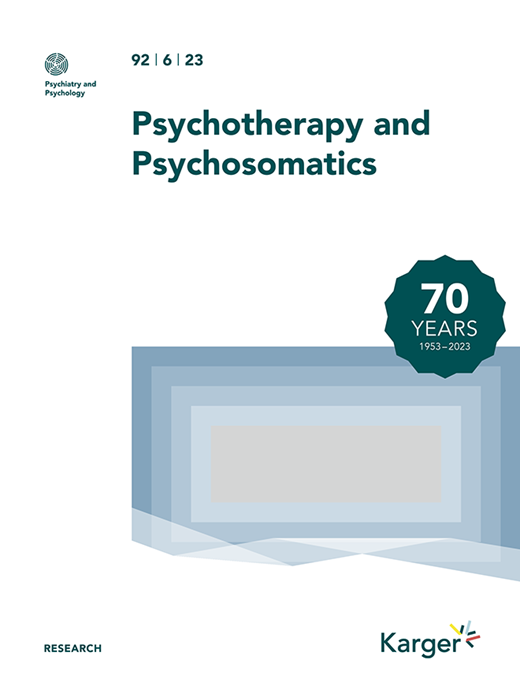向卫生系统报告的饮食失调患者的死亡率:一项基于全国人口的记录联系研究。
IF 17.4
1区 医学
Q1 PSYCHIATRY
引用次数: 0
摘要
背景:之前大多数关于饮食失调的死亡率研究都涉及到接受专业治疗服务的个体。在人口一级跨司法管辖区卫生数据库的数据联系提高了调查结果的普遍性。目的利用行政卫生数据集调查大地理区域饮食失调患者的死亡风险和死亡原因。方法利用相关的医院、心理健康和死亡记录,对2010年至2019年10年期间在澳大利亚医院就诊期间接受饮食失调诊断的10-59岁个体进行了一项回顾性队列研究。同时还对仅接受社区护理的当代人群进行了评估。按性别和年龄组计算了每个州与一般人口相比的死亡率和标准化道德比率。采用Cox回归模型评估社会人口学特征对死亡率的影响。结果饮食失调住院患者的死亡率(N= 19697)是普通人群的4倍多(SMR: 4.54),其中30-39岁人群死亡率最高(SMR: 13.32)。因饮食失调而住院的男性死亡风险更高。神经性厌食症的死亡率并不高于其他饮食失调的诊断。近四分之三的死亡是由自杀/自残或心脏/呼吸系统疾病造成的。结论:在澳大利亚,无论年龄、性别或饮食失调诊断如何,接受医院治疗的饮食失调患者过早死亡的风险更高。性别和年龄组差异可以为政策和资源分配提供信息,并支持制定有针对性的干预措施。本文章由计算机程序翻译,如有差异,请以英文原文为准。
Mortality in people with eating disorders presenting to the health system: A national population-based record linkage study.
BACKGROUND
Most previous mortality research in eating disorders involves individuals attending specialist treatment services. Data linkage across jurisdictional health databases at a population level improves the generalisability of findings.
AIMS
To investigate mortality risk and causes of death for people with an eating disorder across a large geographic region using administrative health datasets.
METHOD
Using linked hospital, mental health and death records, a retrospective cohort study was conducted including individuals aged 10-59 years who received an eating disorder diagnosis during hospital-based encounters in Australia, over a 10-year period between 2010 and 2019. A contemporary cohort of people accessing community care only were also evaluated. Mortality rates and standardised morality ratios (SMR) compared to the general population were calculated for each state, and by sex and age groups. Cox regression models were used to assess the risk of sociodemographic characteristics on mortality.
RESULTS
Mortality in people hospitalised with an eating disorder (N=19,697) was more than four times higher than the general population (SMR: 4.54), and highest in people aged 30-39 years (SMR: 13.32). Men hospitalised for eating disorders had a higher risk of death. Mortality rates in anorexia nervosa were not higher than other eating disorder diagnoses. Almost three-quarters of deaths were caused by suicide/self-harm or cardio/respiratory illness.
CONCLUSIONS
People accessing hospital care with eating disorders in Australia have a higher risk of premature death regardless of age, sex or eating disorder diagnosis. Gender and age group disparities can inform policy and resource allocation and support the development of targeted interventions.
求助全文
通过发布文献求助,成功后即可免费获取论文全文。
去求助
来源期刊

Psychotherapy and Psychosomatics
医学-精神病学
CiteScore
29.40
自引率
6.10%
发文量
46
期刊介绍:
Psychotherapy and Psychosomatics is a reputable journal that has been published since 1953. Over the years, it has gained recognition for its independence, originality, and methodological rigor. The journal has been at the forefront of research in psychosomatic medicine, psychotherapy research, and psychopharmacology, and has contributed to the development of new lines of research in these areas. It is now ranked among the world's most cited journals in the field.
As the official journal of the International College of Psychosomatic Medicine and the World Federation for Psychotherapy, Psychotherapy and Psychosomatics serves as a platform for discussing current and controversial issues and showcasing innovations in assessment and treatment. It offers a unique forum for cutting-edge thinking at the intersection of medical and behavioral sciences, catering to both practicing clinicians and researchers.
The journal is indexed in various databases and platforms such as PubMed, MEDLINE, Web of Science, Science Citation Index, Social Sciences Citation Index, Science Citation Index Expanded, BIOSIS Previews, Google Scholar, Academic Search, and Health Research Premium Collection, among others.
 求助内容:
求助内容: 应助结果提醒方式:
应助结果提醒方式:


